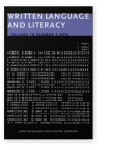Vol. 19:2 (2016) ► pp.189–211
Minimal graphematic words in English and German
Lexical evidence for a theory of graphematic feet
It has been frequently noted in the literature that content words need to consist of at least three letters; this observation is commonly dubbed “three letter rule.” However, a survey of the CELEX database (Baayen et al. 1995) shows that there are (nearly) no content words in English and German that begin with two or more consonant letters and end in a single vowel letter. Words such as [bruː] are not spelt *<bru> but <brew> with an additional letter. These findings cannot be accounted for by the three letter rule but they are explicable within a supra-segmental theory of graphematics that includes graphematic feet and graphematic weight: a well-formed graphematic word consists of at least one graphematic foot that in turn consists of at least one heavy graphematic syllable. This paper offers a data-based survey in order to answer the question whether there is a suprasegmental minimality constraint for monosyllabic graphematic words in English and German.
